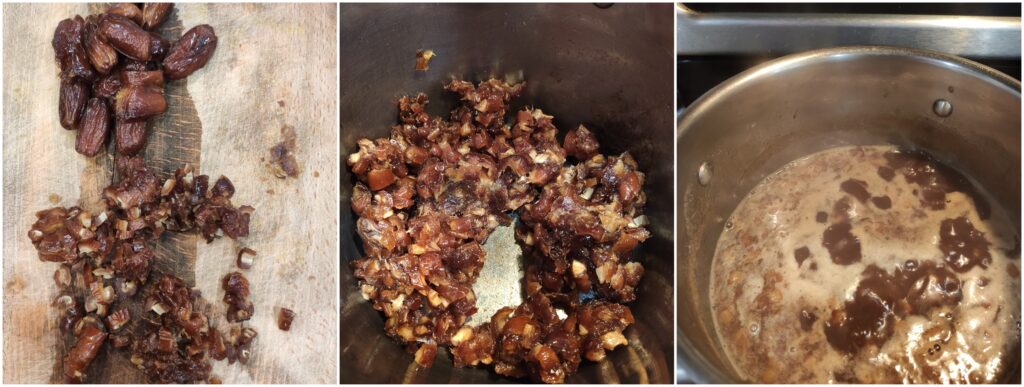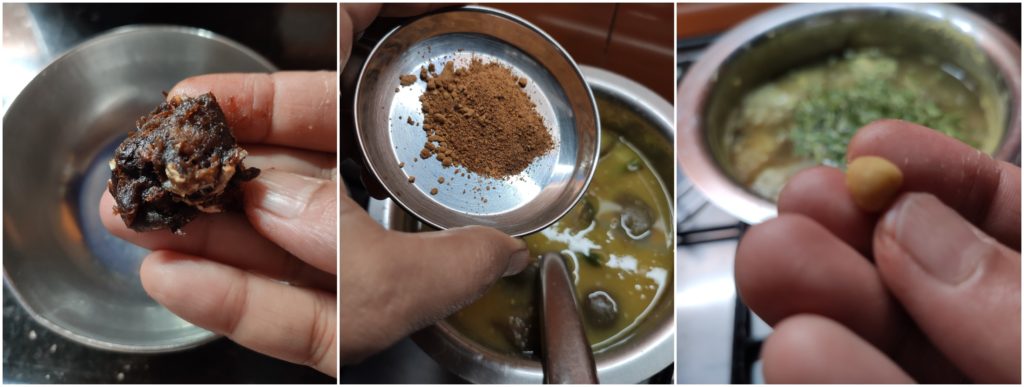I can’t believe it has been six years of blogging and four hundred-plus recipes since I started Shrikripa.in
At first, I intended to restore my recipes to my daughters, near and dear ones. Then, it gave me great learning opportunities, memories, growth, and many beautiful bondings with amazing people.
Today, I want to share our homely recipe of Karjura Payasa, which is nothing but payasam using dates, jaggery and coconut milk, which is a perfect way to end your meal!

Ingredient:
Thank you to all of my readers, who have stood by me, read my recipes, prepared and enjoyed with your near and dear ones, and made an extra effort to write back with beautiful feedback.
Dates – 1 to 1 ½ cups ( chopped)
Jaggery – ¼ to ½ cup ( according to the sweet level)
Coconut milk – 1 tin
OR
Coconut – 1 (To extract milk)
-OR-
Thin coconut milk – 2cups
Thick coconut milk – ½ cup
Salt – ½ tsp
Cardamom powder – 1 tsp
Ghee – 1 tbl sp
Cashew – 1 to 2 tbl sp (Roasted )
Method:
-Take a thick vessel, add ghee and fry chopped dates until it is flavourful.

-Add jaggery, salt, thin coconut milk or plain water and boil the content until the raw smell of the jaggery vanishes.

-Add a thick extract of coconut milk or if you are using tinned coconut milk, add it now. Add powdered cardamom and give one boil and switch off.
-garnish with ghee-fried cashew bits and serve.
































